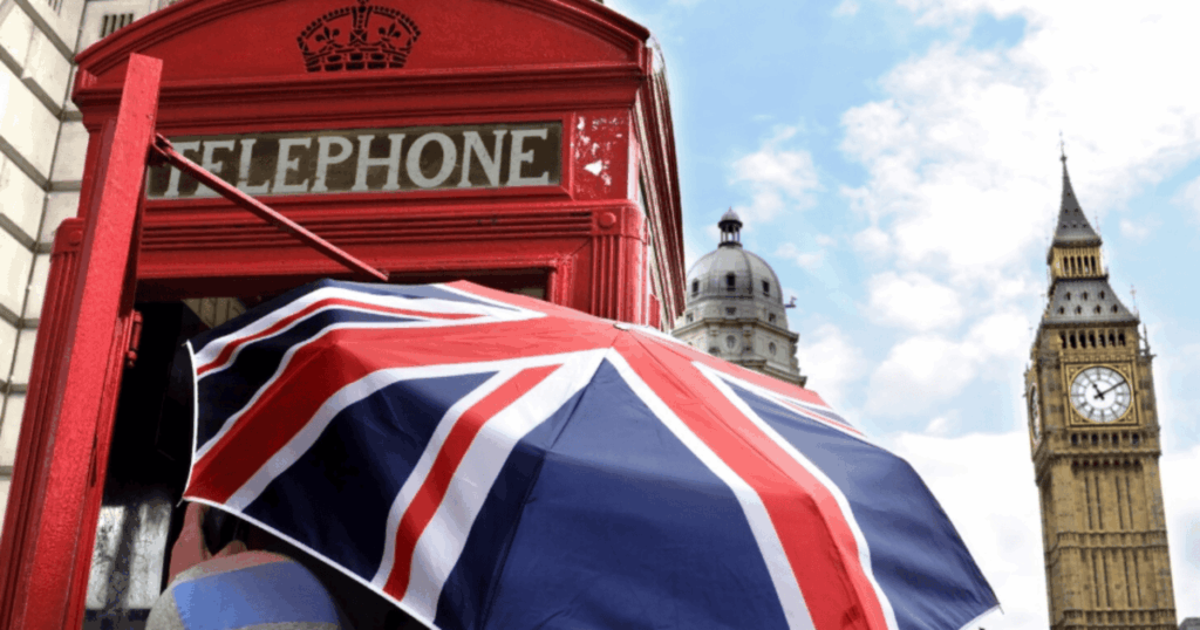There are many queens. In the games, there are queens in the cards and in chess. But in the world of horse racing, the only queen is The Queen of England. The story goes that she was 16 and her father, George VI, «introduced her to the first two loves of her life: Big Game and Sun Chariot,» two of the horses owned by the royal family. At 93, the only event to which His Majesty ensures presence is at the meeting of Royal Ascot, the historic racing event in the United Kingdom.
The Queen had her first riding lesson at just three years old, and she and her sister, Princess Margaret, received their own ponies when she was four—and Her Majesty’s love of everything equine hasn’t dwindled. By age 18 she was an accomplished rider, and has continued to ride for pleasure into her Diamond Jubilee year. In her role as monarch, Elizabeth has also ridden in a ceremonial role. From her first appearance as princess in 1947 and throughout her reign as queen until 1986, she attended the annual Trooping the Color ceremony on horseback. Initially, she rode a bay police horse named Tommy in 1947. When her father, King George VI, was unwell, she rode in his place on his chestnut horse Winston, and she rode Winston after George VI’s death. Later she surrounded a chestnut horse named Imperial. For eighteen consecutive years, from 1969 to 1986, her horse was a black mare named Burmese. Burmese was a gift from the Royal Canadian Mounted Police. From 1987 onward, since Burmese retired, she has attended in a carriage. At 92 years old, Queen Elizabeth can still be seen riding her beloved horses.
As a horse racing fan, her passion was part of a family legacy. Her Majesty owns many thoroughbred horses for use in racing, having initially inherited the breeding and racing stock of her late father King George VI, in 1952. Up until the late 1960s she raced her own-bred stock as well as horses bred by the National Stud. Her registered racing colors (termed silks), as worn by the jockeys riding her race horses, are the same as those used by her father and great-grandfather, King Edward VII; a purple and scarlet jacket with gold braiding, with black cap. Logically, her stable is called «The Queen». Both her colors and her presence is a registered trademark of horse racing in the world. She is not always present when her horses compete, but when she is there it is a source of joy for horse racing lovers.
Her success as a horse racing lover is symbolized as an ambassador for the industry throughout the world. Her word is a respected voice when making decisions. She also owns good results. The Queen has earned a staggering £7,768,448 in winnings from her horses over the last 31 years. Her Majesty has won 534 races from 3,205 runs over her career as a racehorse owner, across both the flat and jump races in the UK and Ireland, new research reveals. The most profitable year came in 2016, a record year in terms of winnings, with her horses earning £560,274 across the flat and jump seasons dating back to 1988, when records began, with Carlton House her top-earning horse across this period with £772,815 in winnings.
Elizabeth II is depicted on horseback in statues in these places: Ottawa, Canada (Parliament Hill, unveiled 1992); Windsor, England (Great Park, unveiled 2003); and Regina, Canada (Legislative Building, unveiled 2005). For the racehorse industry in Britain, she is a universal emblem.
THE SPORTS OF KINGS
Horse racing exists since the world is world. The original villages ran simply for fun, on occasional tracks and with native races. Although it was thought that the first formal horse racing events in the United Kingdom took place during the Middle Ages during the reign of Henry II, it really stood out in English culture during the reign of King James I. It was not until he established the Newmarket’s small town as a royal complex, built the famous castle and started running horses there, which became known as an important milestone for horse racing and other races began to appear in other parts of the country in places like Yorkshire, Croydon and Enfield.
The first reference to the sport of horse racing dates back to England in the sixteenth century. We know that the concept of riding a horse and competing against an opponent predates that by some margin but this is the first time that we see horse racing listed as a competitive and largely friendly sport. We also know that wagering took place prior to this time so we can be almost completely certain that when the sport became official in Great Britain, gambling came along too and was synonymous with it.
1504 marks the year when James IV of Scotland is said to have attended a meeting at Leith and just eight years later, the UK had its first official thoroughbred race in the shape of the Chester Cup, first run in 1512. It was under the reign of Queen Anne that horse racing really took off and started to resemble the sport as it is known today. In 1711 she first had the vision of a major racecourse at Ascot. One day whilst out riding she is reported to have looked out onto an area of open land close to Windsor Castle and expressed her desire to establish an area “for horses to gallop at full stretch”. Later that year the first ever race meeting is held at Ascot. To this day, the opening race at the Royal Ascot festival each year, the Queen Anne Stakes, is fondly named after her in recognition of her efforts to progress the sport as a mainstream past time in British sports culture.
THE MAGIC OF ROYAL ASCOT
In 1711 it was Queen Anne who first saw the potential for a racecourse at East Cote, declaring that it looked an ideal place for “horses to gallop at full stretch” while out riding. Her Majesty’s Plate, worth 100 guineas and open to any horse, mare or gelding over the age of six, took place on 11th August. Each horse was required to carry a weight of 12st and seven runners took part. The race consisted of three separate heats which were four miles long (each heat was about the length of the Grand National), so the winner would have been a horse with tremendous stamina.
At present, Royal Ascot brings together the best horses in Europe, as well as the most prominent that arrive from other powers in the world. It’s five days of racing, with the flower and cream of a historical industry. Elegance is combined with class. Also, also with the popular. It is a social party where the racehorse is celebrated as an icon of greatness. Each of the functions opens with the procession of the Queen of England in ancient carriages full of magic and tradition.
The Royal Enclosure is the most prestigious of the three enclosures, with recent visits from the Queen and Royal Family members. Access to the Royal Enclosure is restricted, with high security on the day. First-time applicants must apply to the Royal Enclosure Office and gain membership from someone who has attended the enclosure for at least four years. For existing badgeholders, an invitation is sent out by Her Majesty’s Representative to request badges. The badgeholder’s name is written onto the badge and can be used only by that person. The colors of the badges vary each day for one-day applicants. Those in the Royal Enclosure have the options of fine dining and hospitality, and a selection of bars. The dress code is strictly enforced. For women, only a day dress with a hat is acceptable, with rules applying to the length and style of the dress. In addition, women must not show bare midriffs or shoulders. For men, black or gray morning dress with top hat is required.
Over 300,000 people make the annual visit to Berkshire during Royal Ascot week, making this Europe’s best-attended race meeting. There are eighteen group races on offer, with at least one Group One event on each of the five days. The Gold Cup is on Ladies’ Day on the Thursday.
UK BETS ON HORSE RACING
The United Kingdom is the father of betting in the world. Consequently, also in the horse races there is a seal of the Islands. While the idea of a common market organized by racetracks proliferates in much of the world, a business modulated by private companies has been thought about since the beginning of time in Britain. According to some sources, The man credited as the first ever bookmaker is a certain William Ogden. Curiously, for a man who essentially gave birth to one of the most popular pastimes and biggest industries in the world, very little is known about his life.
What we do know is that Ogden became the first man to offer fixed odds on all horses in a specific race. At that point in history of betting, all you needed was a head for mathematics, an entrepreneurial disposition and, of course, a fair amount of money to back you up if things went wrong.
The organization of horse racing bets was born when Winston Churchill passes the Race Betting Act in 1928. The legislation meant that profits made from betting could be invested back into the sport, and also that betting could now be taxed and controlled by the government. This lent a fair amount of credibility to betting on the sport as no longer did people have to go via illegitimate gambling rigs or undesirable operations in order to place bets. They could now place wagers with full peace of mind that they were dealing with a properly organized and regulated organization. Newmarket and Carlisle were the first meetings which offered official tote betting pools in 1929.
This was the time when important characters such as William Hill and Joe Coral began to appear. Officially, the Coral Group was first established in 1926 but young Joe had started his bookmaking career much earlier. Having left school at 14, a talent for mathematics landed him a job as a clerk in a lamp making factory and it was there that he came into contact with several private bookies.
Joe became unofficially employed as a Bookies Runner – an occupation that has ultimately led to many of the established brands that we know today. The mechanics of the job are not widely published but the clue is in the name. People such as Joe Coral would literally ‘run’ the bet between client and bookmaker, handling the cash and delivering any winnings back to the customer.
William Hill’s entry into the world of bookmaking provides interesting parallels to that of Joe Coral. Hill ran away from his schooling at the tender age of 12 and by the start of World War One had begun an apprenticeship at the BSA Motorcycle Company in Birmingham. From there he got into ‘running’ and by having access to a bike he could do his job far more efficiently.
At the conclusion of the conflict, the government was able to turn once again to its issues at home and in 1949, a second Royal Commission was established to see if there had been a shift in public opinion since the first sitting prior to World War II.
It was evident that betting was becoming acceptable in all levels of society and over the years, several factors had broken down social boundaries to an extent. Chairman of the commission Henry Willink and his partners agreed with the opinion that attitudes to gambling were stuck in a form of misplaced Victorian morality. Furthermore and perhaps more importantly, the government had also recognised that a huge revenue could be drawn from the proceeds of a legitimised industry.
The Betting Levy Act of 1961 meant that for the first time, bookmakers could open betting shops and conduct betting operations away from the race track. The passing of this act meant that bookmakers could now offer – and were restricted to – horse racing pool bets and that it was now compulsory for bookmakers to pay a levy tax on their off-course profits to the Horse Racing Levy Board. This is a landmark date in English horse betting history as not only did it mean that people had easier and greater access to sports betting, but the law, which stated, that companies had to contribute a percentage of their earnings to the levy board meant that there were additional funds were now available to be invested back into the sport.
Established brands such as Ladbrokes and William Hill started to get involved and it’s said that from May 1st 1961, betting shops were opening at a rate of 100 per week until there were 10,000 premises by the following November.
Over the years, other names started to appear on the British High Street such as Betfred, Paddy Power and Stan James. In many cases these were regional with BetFred in the Manchester area and Stan James to the west of England and it wasn’t until the digital age revolutionised the way we bet that we began to know them just a little bit better.
Growth continued throughout the 1970’s, 80’s and 90’s and although most of us like to gamble online these days, the betting shop on the High Street continues to thrive. The Betting and Gaming Act of 1960 had finally made it possible and had paved the way for operators to go to the global level that we know today.
AT THE PRESENT
In 1996 the first fully licensed online betting site, Intertops was launched. Punters across the world took to the idea of placing bets conveniently from inside their own homes and began signing up in their thousands. This then heralded the age of online gambling as new betting sites began to spring up and companies began investing in web-based operations to complement their services. UK betting sites recognise horse racing as one of the most valuable sports markets and funnel their resources into providing widespread coverage of races from the UK and abroad, which is why, today, the best horse racing betting sites provide outstanding services with race coverage from all corners of the globe, and offer competitive odds prices across the board.
Over the past decade the turnover from off-course horse race betting in the United Kingdom (UK) has significantly decreased from 5.74 billion British pounds in 2009 to 4.22 billion in 2019. A similar trend can be seen with off course dog race betting. Despite a slight decrease, the number of betting shops still held steady though, with William Hill and Ladbrokes making up roughly half of the shops.
As the gambling trends in the UK shift more and more towards online gambling, also the turnover of on-course betting decreases. However, according Statista, the overall gross gambling yield (GGY) of the betting sector remains stable at roughly 3.25 billion British pounds in 2019.
When looking at the entire GGY over time, the remote betting, bingo and casino sector quickly exploded onto the market and now accounts for the largest market share, reaching approximately 5.32 billion British pounds in 2019. In addition, the number of employees in the remote gambling sector rapidly increased as well.
AN INDUSTRY WITH SOCIAL IMPACT
The GB breeding industry’s direct GVA contribution of £62m is relatively low due to the high proportion of unprofitable breeders in the industry. But the industry’s significant spending on suppliers generates a large impact in the UK economy, contributing £224m in indirect GVA impacts. The spending of breeding industry employees and supplier employees generates an additional £140m in induced GVA impact.
The breeding industry employed around 3,500 people in 2018. Spending on suppliers generates an additional 6,400 jobs in other industries. Breeding industry employee spending and the spending of supplier employees generates a further 9,100 jobs in the UK economy.
The breeding industry spends around £80m on employee compensation in 2017. Supplier expenditure generates an additional £82m in employee compensation in the UK economy. The spending of breeding industry employees and supplier employees generates an additional £124m in employee compensation.
Direct gross value added (GVA) measures the pre-tax contribution of the thoroughbred breeding industry to economic output. It is calculated by subtracting the total supplier expenditure from the total revenue of the sector. GVA can also be calculated by adding net profits and wages & salaries, which represent the respective incomes earned by businesses and individuals from breeding. The direct GVA of the thoroughbred breeding industry is estimated to be £62m. The industry generates significantly more income for employees than for business owners, with £80m generated through wages and salaries and -£16m generated in profits.

























